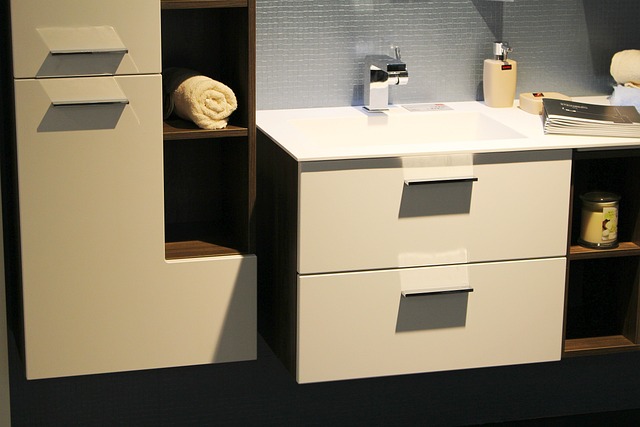Ensuring optimal experiences with energy-efficient smart toilets hinges on overcoming compatibility challenges across diverse devices. This involves understanding varying hardware, software, and communication protocols among smartphones, tablets, IoT appliances, and smart home hubs. Adopting universal standards for technologies like Bluetooth/Wi-Fi vs Zigbee/Z-Wave is crucial for harmonious device interaction, fostering a connected ecosystem. Standardization enhances user convenience, promotes sustainability by reducing energy consumption, and ensures a luxurious experience that meets contemporary living demands. Developers and consumers both play roles in achieving optimal compatibility through inclusive design, adaptive interfaces, regular updates, and adhering to interoperability standards.
In today’s interconnected world, ensuring compatibility across devices is vital for a seamless user experience. This article explores the intricacies of achieving universal functionality, focusing on energy-efficient smart toilets as a cutting-edge example. We delve into understanding device compatibility, the role of advanced technologies, and standardization protocols. Additionally, we provide insights on overcoming challenges and best practices for developers and consumers to ensure smooth integration. Discover how these strategies revolutionize home automation, starting with the implementation of energy-efficient smart toilets.
Understanding Device Compatibility: The Foundation for Seamless Experiences
Ensuring compatibility across devices is paramount in creating a seamless user experience, especially when it comes to modern innovations like energy-efficient smart toilets. The foundation lies in understanding the diverse ecosystem of devices and their unique capabilities. Each device, from smartphones to tablets and IoT (Internet of Things) appliances, operates on specific hardware, software, and communication protocols.
Compatibility challenges arise due to varying standards, operating systems, and manufacturers’ proprietary technologies. For instance, an energy-efficient smart toilet might integrate seamlessly with a user’s smartphone via Bluetooth or Wi-Fi, but it could face compatibility issues when connected to a smart home hub that relies on Zigbee or Z-Wave technology. Navigating these complexities requires developers and manufacturers to adopt universal standards and protocols, ensuring devices from different producers can communicate and work together harmoniously.
The Role of Energy-Efficient Smart Toilets in Modern Homes
In modern homes, the integration of energy-efficient smart toilets is a significant step towards sustainable living and enhancing overall comfort. These advanced fixtures offer more than just improved hygiene; they are designed to provide an efficient and user-friendly experience while minimizing water consumption and power usage. With touchless sensors, automated flushing mechanisms, and real-time monitoring features, smart toilets cater to today’s tech-savvy users who seek convenience and environmental responsibility.
The energy-saving capabilities of these devices are noteworthy, as they contribute to reduced carbon footprints by optimizing water usage and lowering electricity bills. Additionally, many modern smart toilets feature heated seats, night lights, and customizable settings, ensuring a luxurious experience that meets the demands of contemporary living. By considering these innovations in home design, homeowners can create spaces that prioritize both comfort and environmental sustainability.
Standardization and Protocols: Unlocking Universal Compatibility
Standardization and protocols play a pivotal role in achieving universal compatibility across devices, ensuring a seamless experience for users. By establishing consistent standards, manufacturers can create products that communicate effectively with each other, regardless of brand or model. This is especially crucial in the case of modern innovations like energy-efficient smart toilets, where diverse components—from sensors to automation systems—need to integrate seamlessly.
Standardized protocols enable these devices to share data effortlessly, facilitating features such as remote control, real-time monitoring, and automatic adjustments. This universal compatibility not only enhances user convenience but also promotes sustainability by reducing energy consumption and waste. As technology advances, adherence to open standards becomes even more vital for creating interconnected ecosystems that offer enhanced functionality and a coherent user experience.
Overcoming Challenges: Ensuring Functionality Across Devices
In today’s diverse digital landscape, ensuring compatibility across devices is more crucial than ever for a seamless user experience. When it comes to cutting-edge innovations like energy-efficient smart toilets, this challenge intensifies. Overcoming functionality gaps between various operating systems, hardware configurations, and connectivity standards is paramount.
Developers must adopt inclusive design principles, prioritizing cross-platform compatibility through adaptable coding practices. Additionally, implementing robust testing frameworks that simulate diverse device environments helps identify potential issues early in the development cycle. By addressing these challenges proactively, creators can ensure that energy-efficient smart toilets—or any digital product—offer consistent performance and user-friendly interaction across a wide range of devices.
Best Practices for a Smooth Integration: Tips for Developers and Consumers
To ensure compatibility across devices for a seamless experience, especially with energy-efficient smart toilets, developers and consumers alike should adopt best practices. For developers, this means prioritizing universal design principles, adhering to established standards, and conducting thorough cross-device testing. Incorporating features like adaptive user interfaces and voice control ensures that the smart toilet can be accessed comfortably by users regardless of their device or ability. Additionally, integrating secure communication protocols safeguards personal data while enabling seamless interaction with other connected devices in the home ecosystem.
Consumers play a crucial role by staying informed about device compatibility before making purchases. Researching interoperability standards and checking for certified products ensures that energy-efficient smart toilets can connect smoothly with existing tech. Keeping software up to date is another vital practice, as updates often include bug fixes and security enhancements that improve overall compatibility. By following these tips, both developers and consumers can contribute to a more harmonious digital environment, enhancing the overall user experience.
Ensuring compatibility across devices is paramount in creating seamless experiences, especially with the rise of innovative technologies like energy-efficient smart toilets. By adopting standardized protocols and best practices, we can overcome challenges and foster universal functionality. This approach not only enhances user convenience but also drives forward the digital transformation in our homes, making everyday tasks more efficient and enjoyable.
